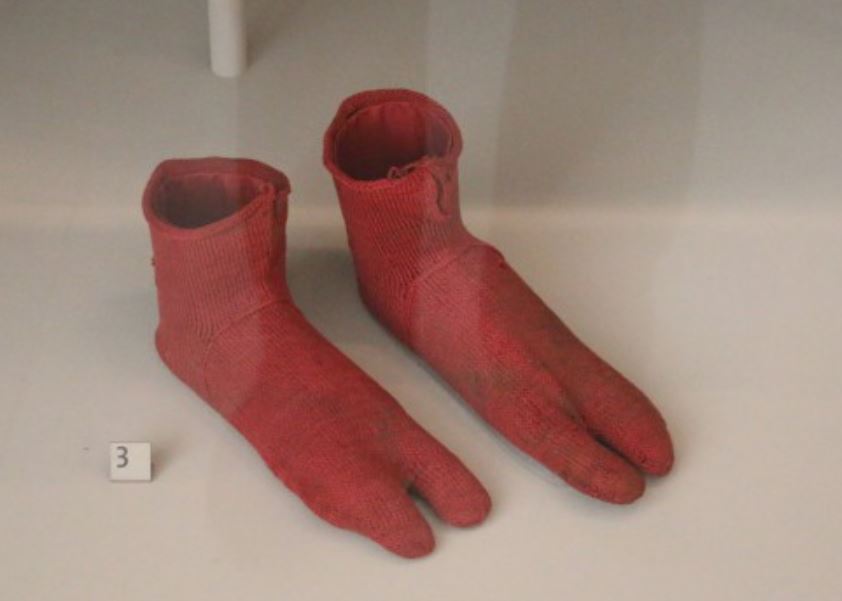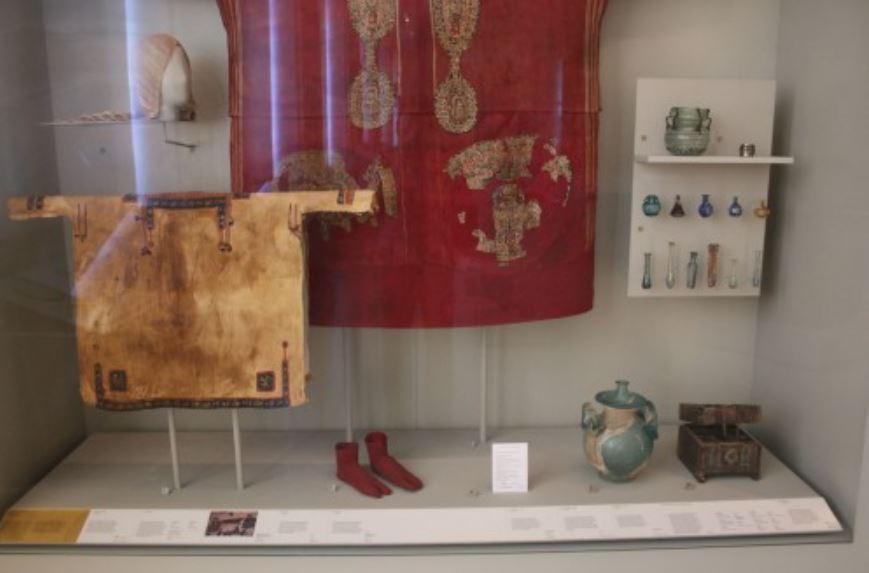1,600-year-old Egyptian Socks was displayed in London's Victoria & Albert Museum. Also known as Coptic socks are thought to date back to the fourth to fifth century.
Unearthed in the late 19th century, these fashionable socks may raise questions about the shape of people's feet in ancient times. However, the lobster-like design featuring a divided toe serves a practical purpose.
These socks were meticulously crafted to be worn with sandals, showcasing a level of style and functionality that differs from contemporary footwear.

In ancient Egypt, sandals were the daytime footwear of choice. However, during certain times of the year when cooler nights prevailed, these sandal socks became a sought-after accessory. They offered comfort and warmth, providing comfort and warmth during evening strolls.
In addition to their distinctive appearance, the Coptic socks are remarkable for their craftsmanship. They were created using a textile technique known as nålebinding, believed to precede both knitting and crochet methods.
This technique utilized a single-eyed needle to form loops with thread, resulting in a pliable fabric. As a result, it became a favored method for crafting mittens, socks, and hats.

While it may bear some resemblance to knitting, experienced knitters would readily identify that the nålebinding process involved was actually pretty different.
According to a 2017 paper on Nålebinding socks, reading:
“While knitting and crochet use a continuous thread, the thread length is restricted in [Nålebinding] as the needle carrying the working end needs to pass through previously-made loops in the fabric structure,”
“For this reason, [Nålebinding] creates items that can withstand heavy use and do not run in case of thread breakage.”
Indeed, this technique is closer in resemblance to sewing than knitting. Each stitch is crafted by pulling the full thread length through, and then cinching the loop to create the subsequent stitch. As a result, it is a slow and limited process as it can only be made from a specific length of thread.
Despite its lengthy process, it yields impressive results in terms of durability. These 1,600-year-old Coptic socks, for example, appear to be in better condition than half of the socks in our own sock drawer.
Therefore, the next time you judge the combination of socks and sandals, remember that there was a time when people went to great lengths to achieve this type of high fashion.






